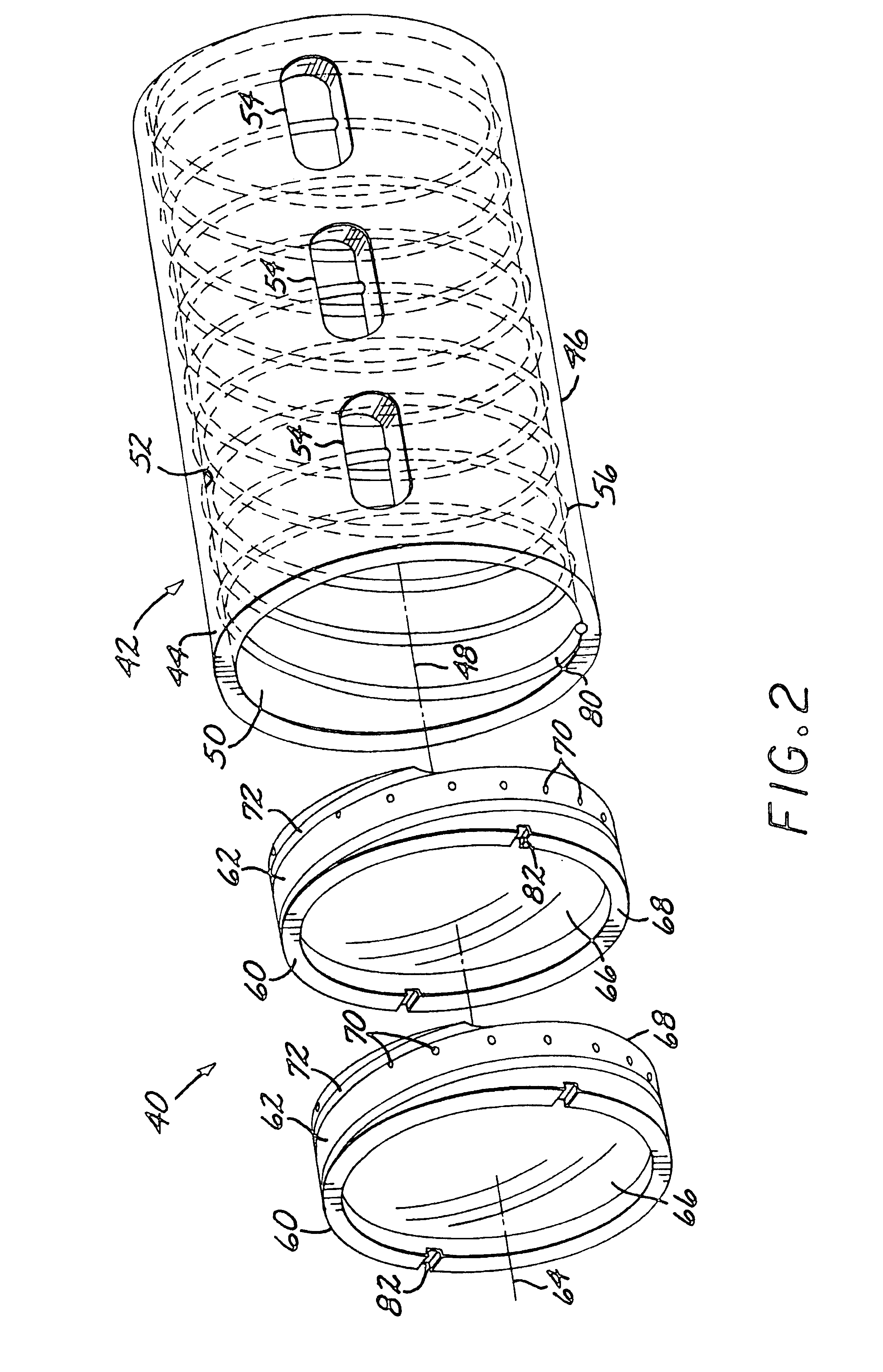Lens assembly with externally adjustable lens spacing, and method for its assembly
- Summary
- Abstract
- Description
- Claims
- Application Information
AI Technical Summary
Benefits of technology
Problems solved by technology
Method used
Image
Examples
Embodiment Construction
[0021]FIG. 1 depicts the steps in a method for assembling a lens assembly, and FIGS. 2 and 3 illustrate two embodiments of lens assemblies 40 that may be produced by this approach.
[0022]A housing 42 is provided, step 20. The housing 42 includes a housing body 44 that typically but not necessarily has a housing external surface 46 that is substantially cylindrical about a cylindrical housing axis 48. In the embodiment of FIG. 2, the housing external surface 46 is cylindrical with a single cylindrical diameter. In the embodiment of FIG. 3, the housing external surface 46 is cylindrical with a series of different segments 46a, 46b, and 46c, each with a different cylindrical diameter relative to the cylindrical housing axis 48. The housing 42 has a cylindrical bore 50 in the housing body 44 with an internal bore surface 52. In the embodiment of FIG. 2, the internal bore surface 52 is cylindrical with a single cylindrical diameter. In the embodiment of FIG. 3, the internal bore surface 5...
PUM
 Login to View More
Login to View More Abstract
Description
Claims
Application Information
 Login to View More
Login to View More - R&D
- Intellectual Property
- Life Sciences
- Materials
- Tech Scout
- Unparalleled Data Quality
- Higher Quality Content
- 60% Fewer Hallucinations
Browse by: Latest US Patents, China's latest patents, Technical Efficacy Thesaurus, Application Domain, Technology Topic, Popular Technical Reports.
© 2025 PatSnap. All rights reserved.Legal|Privacy policy|Modern Slavery Act Transparency Statement|Sitemap|About US| Contact US: help@patsnap.com



